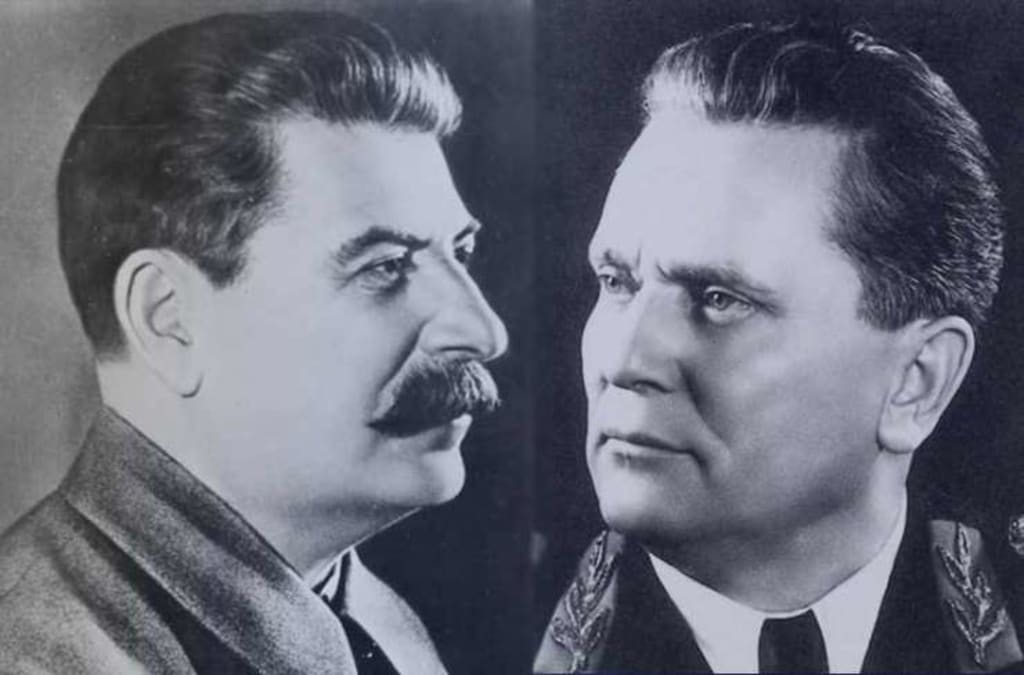The relationship between Stalin and Tito during the aftermath of World War II was tense and fraught with tension. Both men were communist leaders, but their ideologies and approaches to governing diverged significantly. This dissonance came to a boiling point, resulting in a series of attempted assassinations of Tito, orchestrated personally by Stalin.
The history of the quarrel between Stalin and Tito dates back to the end of World War II. Stalin had been wary of Tito’s independent leanings, which became more apparent as Tito’s communist forces in Yugoslavia saw success in the war effort against the Axis powers in the region. Tito was keen on promoting regional autonomy and national self-determination, which at times clashed with Stalin’s vision of communism based on centralized power.
Stalin’s apprehension towards Tito’s approach led him to believe that Tito posed a potential danger to Soviet communism. As a result, Stalin made efforts to weaken and destabilize Tito’s leadership in Yugoslavia through various means, including ignoring requests for military and economic support, recalling Soviet advisers, and banning Yugoslavian products from trading in Soviet markets. Stalin’s former ally had turned rogue in his eyes.
In light of this, Stalin resorted to more extreme measures. Reports suggest that Stalin personally supervised the plotting and organization of several assassination attempts on Tito, with the first attempt being made as early as 1948. During this time, Stalin’s secret police sent agents into Yugoslavia, with instructions to murder Tito and replace him with a puppet leader. However, each attempt met with failure, and many of Tito’s men were captured, some with bombs and rifles.
Tito’s captors did not deter him from writing to Stalin, openly criticizing Stalin’s actions. In one such correspondence, he wrote, “Stop sending people to kill me! We’ve already captured five of them. One of them had a bomb, and another had a rifle. If you don’t stop sending killers, I’ll send one to Moscow and I won’t have to send a second.” Tito had grown aghast of the persistent attempts on his life and had developed enough evidence to point the finger directly at Stalin.
The conflict between Stalin and Tito escalated as Tito began building closer ties with the United States and China, further eroding Stalin’s relationship with the Yugoslavian leader. The two leaders’ divergent philosophies, with Tito favoring independence for communist nations, as opposed to Stalin’s belief that all communist nations should be governed from Moscow, further widened the gap between them.
The informational alliance between Tito and Stalin’s enemies eventually brought about the end of their relationship. In 1948, Tito officially declared Yugoslavia’s independence from the Cominform, the communist organization run by Stalin, and subsequently severed ties with the Soviet Union. Stalin was left with no choice but to come to terms with Tito’s ambitiousness and accept his independence, no doubt resented to the bitter end.
The attempted assassinations and subsequent breaks in the relationship between Stalin and Tito have often been attributed to the KGB’s Joint State Political Directorate, which carried out assassinations abroad on Soviet orders. While their role has never been fully disclosed, historians argue that the Directorate would have executed Stalin’s orders in this instance.
In conclusion, the relationship between Stalin and Tito was marked by both shared ideologies and fundamental differences that ultimately led to failed assassination attempts and eventual political separation. The dispute between the two leaders demonstrates the complex dynamics between communist leaders, where ideology could give way to brutality, and national self-determination often outweighed centralized power. Their dispute was a watershed moment in the history of communism, showcasing how far-reaching ramifications could stem from political tension between comrades.
image sources
- l4xjwushhaqsboewklqh: https://res.cloudinary.com/jerrick/image/upload/d_642250b563292b35f27461a7.png,f_jpg,fl_progressive,q_auto,w_1024/l4xjwushhaqsboewklqh.jpg



